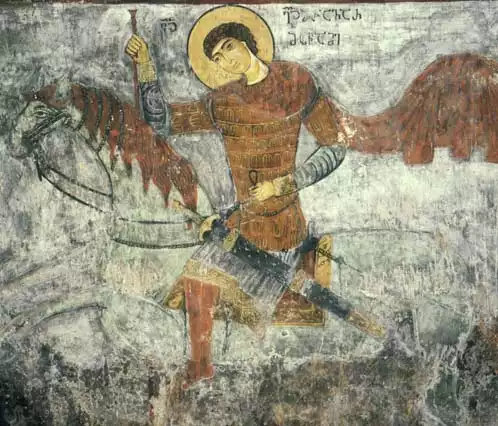
The Eastern Orthodox Patriarchate of Georgia, an integral entity in the tapestry of global Orthodoxy, stands as a beacon of faith and tradition in the Caucasus region. Established in the early Christian era, this patriarchate has weathered centuries of cultural and political changes, consistently upholding its spiritual and ecclesiastical traditions.
Historical Foundations and Development
The genesis of the Eastern Orthodox Patriarchate of Georgia is deeply rooted in the 4th century, a pivotal era marked by the Christianization of the kingdom. Saint Nino, a figure revered for her missionary zeal, played a crucial role in this religious transformation. The acceptance of Christianity under King Mirian III heralded a new epoch, intertwining the Georgian state and church.
Over the centuries, the patriarchate evolved amid the region’s tumultuous history. The Byzantine and Persian influences, followed by the Arab domination in the 7th century, shaped its theological and cultural contours. Despite these challenges, the Georgian church maintained its autonomy, a testament to its resilience and deep-seated faith.
The medieval period marked a golden age for the patriarchate, with the flourishing of ecclesiastical art, literature, and theology. This era saw the construction of monumental architectural gems like the Svetitskhoveli Cathedral and Gelati Monastery, symbols of the Georgian Orthodox faith’s enduring legacy. The theological works and hymns from this period, penned by illustrious figures such as Shota Rustaveli and Ilia Chavchavadze, enriched the spiritual and cultural heritage of Georgia.
However, the subsequent centuries brought trials. The Mongol invasions, followed by Ottoman and Persian rule, imposed constraints on the patriarchate. Yet, it emerged as a custodian of national identity, fostering a sense of unity and resilience among the Georgian people.
In the modern era, the Eastern Orthodox Patriarchate of Georgia has navigated the complexities of post-Soviet independence, striving to rejuvenate its spiritual and societal role. The patriarchate today not only represents a religious institution but also embodies the historical and cultural consciousness of the Georgian nation.
As the guardian of centuries-old traditions, the patriarchate continues to influence the spiritual life of the Georgian people profoundly. Its role in education, social issues, and interfaith dialogue highlights its commitment to addressing contemporary challenges while preserving its rich heritage.
The journey of the Eastern Orthodox Patriarchate of Georgia is a vivid tapestry of faith, resilience, and cultural evolution, emblematic of the enduring spirit of the Georgian nation.
Contemporary Role and Significance
In the contemporary landscape, the Eastern Orthodox Patriarchate of Georgia continues to play a pivotal role in the spiritual and cultural life of the nation. Its influence extends beyond religious teachings, permeating various aspects of Georgian society. The patriarchate, under the leadership of the Catholicos-Patriarch of All Georgia, actively participates in national dialogues and provides moral guidance on social issues, reinforcing its position as a cornerstone of Georgian identity.
The patriarchate’s involvement in education and youth programs is particularly noteworthy. By establishing and operating numerous educational institutions, it contributes significantly to the intellectual and moral development of the younger generation. These institutions not only impart religious teachings but also focus on a broad spectrum of academic disciplines, fostering a well-rounded education.
Moreover, the patriarchate has been instrumental in the preservation and promotion of Georgian cultural heritage. Through its stewardship of ancient monasteries, churches, and religious artifacts, it safeguards the physical manifestations of Georgia’s rich historical legacy. The patriarchate’s efforts in restoring and maintaining these sites underscore its commitment to preserving the nation’s cultural and spiritual history.
In the realm of international relations, the Eastern Orthodox Patriarchate of Georgia maintains active engagement with other Orthodox churches and participates in ecumenical dialogues. This interaction not only fosters a sense of unity within the Orthodox world but also promotes mutual understanding and respect among different Christian denominations.
The patriarchate’s role in promoting peace and reconciliation in a region often fraught with conflict is also significant. Its stance on national issues and efforts towards social cohesion have been crucial in times of instability, offering a voice of reason and a path towards peaceful resolution.
In conclusion, the Eastern Orthodox Patriarchate of Georgia, with its rich historical roots and dynamic contemporary presence, remains a vital force in the spiritual and cultural fabric of Georgia. Its influence, transcending mere religious doctrine, touches the lives of Georgians in manifold ways, shaping the nation’s identity and guiding its moral compass.
References
- Lang, David M. “The Georgians.” Praeger Publishers, 1966.
- Rapp, Stephen H. “Studies in Medieval Georgian Historiography.” Peeters Publishers, 2003.
- Suny, Ronald G. “The Making of the Georgian Nation.” Indiana University Press, 1994.
- Tarchniashvili, Michael. “The Orthodox Church of Georgia: History and Current Status.” Gorgias Press, 2007.
- Wardrop, Marjory. “The Kingdom of Georgia: Notes on Religion and History.” Oxford University Press, 1900.
- Wixom, William D. “The Art and Architecture of Medieval Georgia.” Metropolitan Museum of Art, 1982.
